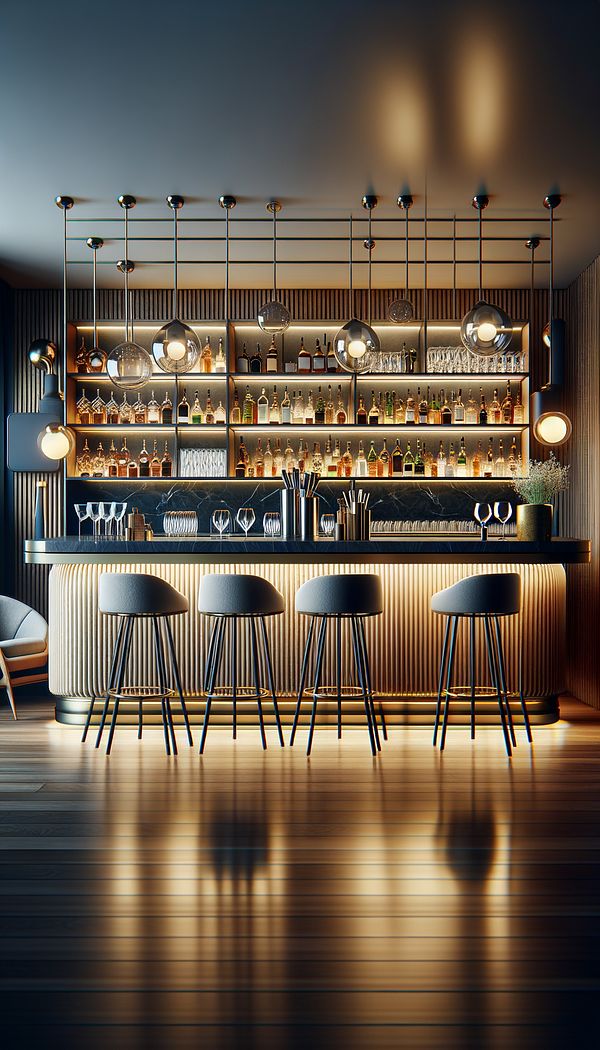What is Bar?
In interior design, a bar refers to a counter and the surrounding area where beverages, either alcoholic or non-alcoholic, are prepared and served.
Description
In the context of interior design, a bar isn't just a place for serving drinks; it's a hub of social activity and a statement piece within a room. Typically, a bar area includes a counter with stools for seating, storage for beverages and glassware, and might even feature specialized equipment like wine fridges or cocktail stations. Depending on the design, bars can range from sleek, modern fixtures to more traditional, wood-paneled installations, reflecting the overall style of the interior.
Designing a bar involves more than just aesthetics; ergonomics play a crucial role. The height of the bar counter, the ease of access to storage, and the placement of appliances all contribute to the functionality of the space. Bars can be a part of various settings including residential homes, where they add an element of luxury, to commercial spaces like restaurants and hotels, serving both aesthetic and practical purposes.
Furthermore, the materials used in the construction of a bar, such as wood, metal, or stone, along with lighting choices, can dramatically influence the atmosphere of the space.
Usage
In a residential setting, a home bar might be a part of the kitchen or living room, offering a place for homeowners to entertain guests. In commercial design, bars are essential features in restaurants, cafes, and hotels, often becoming focal points that attract customers.
FAQs
-
What are some essential features of a bar in interior design?
Essential features include a counter for preparing and serving drinks, storage for beverages and glassware, seating options like stools or chairs, and possibly specialized appliances such as wine coolers or beer taps.
-
How does the design of a bar impact the overall style of a space?
The design of a bar, from the materials used to the architectural style and lighting, can complement or enhance the overall aesthetic of the space, making it a focal point and setting the tone for social interactions.
-
Can a bar be incorporated into small spaces?
Yes, with careful planning and creative design solutions, a bar can be integrated into small spaces through compact or fold-away designs, maximizing functionality without compromising on style.
Practical Application
When designing or incorporating a bar into an interior, consider the flow of traffic, the functionality of the space, and how it complements the overall design theme. Materials and lighting should be chosen not only for their aesthetic appeal but also for their durability and the atmosphere they help create. Optimizing storage and ensuring the area is well-equipped for its intended use will enhance the overall experience.
-
Architectural Elements199 articles
-
Design Styles478 articles
-
Furniture Types599 articles
-
Lighting111 articles
-
Decorative Objects240 articles
-
BatikBatik is a technique of wax-resist dyeing applied to whole cloth.
-
CanapéA canapé is a small, decorative sofa, typically designed to seat two to three people.
-
Worm HolesWorm holes are small, round holes created by wood-boring insects, often giving wood a distressed, aged appearance.
-
ColonnadeA series of columns supporting a roof or entablature.
-
FauteuilA fauteuil is a style of open-arm chair with a primarily wooden frame.
